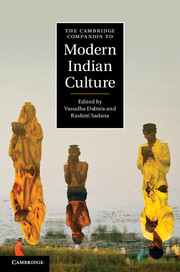Introduction
Published online by Cambridge University Press: 28 May 2012
Summary
On 25 February 2008 a group of student activists, accompanied by a camera crew, charged into the office of the head of the history department at Delhi University demanding that a particular text be removed from the syllabus of an undergraduate course on ancient Indian history. The activists belonged to the Akhil Bharatiya Vidyarthi Parishad (ABVP), part of a larger Hindu-nationalist group of organizations known as the Sangh Parivar. The text in question was A. K. Ramanujan's ‘Three Hundred Ramayanas: Five Examples and Three Thoughts on Translation’, an essay that documents the array of tellings of Valmiki's great Sanskrit epic, The Ramayana. By detailing five of these alternative Ramayanas, the essay brings to life different interpretations of characters and alternative narratives of the epic itself. Ramanujan (1929–93) was a translator, poet and scholar who for many years taught at the University of Chicago. In the essay in question, he writes with genuine reverence of how the ‘number of Ramayanas and the range of their influence in South and Southeast Asia over the past twenty-five hundred years or more are astonishing’. He goes on to list the numerous languages in which the Rama story can be found, including Balinese, Bengali, Cambodian, Chinese, Gujarati, Javanese, Kannada, Kashmiri, Laotian, Malaysian, Marathi, Oriya, Prakrit, Sanskrit, Sinhalese, Tamil, Telugu, Thai and Tibetan –
Through the centuries, some of these languages have hosted more than one telling of the Rama story. Sanskrit alone contains some twenty-five or more tellings belonging to various narrative genres (epics, kavyas or ornate poetic compositions, puranas or old mythological stories, and so forth). If we add plays, dance-dramas, and other performances, in both the classical and folk traditions, the number of Ramayanas grows even larger. To these must be added sculpture and bas-reliefs, mask plays, puppet plays and shadow plays. . .
In these versions the story is told differently from one of the earliest and most prestigious of them all: Valmiki’s Sanskrit Ramanyana.
- Type
- Chapter
- Information
- The Cambridge Companion to Modern Indian Culture , pp. 1 - 10Publisher: Cambridge University PressPrint publication year: 2012
- 1
- Cited by



